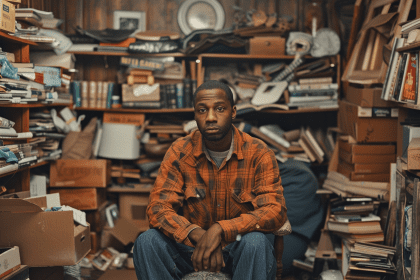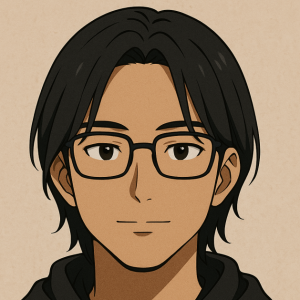Many people find themselves repeatedly drawn to partners who cause emotional pain, creating cycles that prove difficult to break. This seemingly contradictory attraction pattern appears across cultures and backgrounds, suggesting deeper psychological mechanisms at work.
Understanding these unconscious forces can help individuals recognize and potentially redirect harmful relationship patterns toward healthier connections.
Early relationship blueprints
The foundation for adult relationship patterns often develops during childhood:
Attachment formation: Initial bonds with caregivers create internal models for how relationships function and what love feels like.
Familiarity pull: Emotional patterns experienced in childhood—even difficult ones—can feel instinctively “right” in adulthood simply because they’re recognizable.
When early care was inconsistent or conditional, adults may unconsciously seek similar dynamics. This doesn’t represent a deliberate choice for pain but rather the heart following established emotional pathways.
Mental health professionals often describe these connections as trauma bonds, where unresolved childhood needs drive attraction to relationships that mirror earlier emotional experiences.
Neurochemical influences
Volatile relationships trigger powerful biochemical responses:
- Intermittent reinforcement (unpredictable positive responses) creates strong behavioral patterns
- Emotional highs and lows stimulate dopamine pathways similar to addiction responses
- Reconciliation after conflict produces temporary euphoria that can become psychologically rewarding
This biological cocktail creates a cycle where the brain begins to associate emotional turbulence with eventual reward. The relief felt when conflict temporarily resolves generates feelings easily confused with genuine connection.
Over time, this pattern conditions individuals to equate relationship intensity with relationship value, making calmer connections seem less fulfilling by comparison.
The rescuer dynamic
Many harmful relationships persist through a problematic caretaking pattern:
Savior mentality: Believing one’s love and dedication can heal or transform a troubled partner.
Identity through helping: Finding purpose and worth through supporting someone who appears to need emotional rescue.
This dynamic creates a dangerous equation where personal value becomes tied to another’s dysfunction. The more broken the partner seems, the more significant the helper feels—creating a perverse incentive to maintain the imbalance.
What begins as compassion evolves into codependency, with both partners developing unhealthy reliance on their established roles rather than growing toward health.
Self-worth barriers
Low self-esteem significantly influences relationship choices:
Internal beliefs: Thoughts like “this is what I deserve” or “better options aren’t available to me” justify staying in painful situations.
Fear of abandonment: The prospect of being alone often feels more threatening than enduring mistreatment.
Familiar discomfort: Known pain can feel safer than the uncertainty of new relationship patterns.
These internal narratives create powerful psychological barriers to change. Without addressing underlying self-worth issues, even recognizing harmful patterns rarely produces lasting behavioral change.
Cultural romanticization
Popular media often portrays relationship struggle as evidence of passion:
Fictional models: Movies and music frequently depict emotional volatility as proof of deep love.
Normalized dysfunction: Phrases like “love hurts” and “fighting for the relationship” frame conflict as an expected or even necessary component of significant connections.
These cultural messages create implicit expectations that healthy relationships should contain elements of pursuit, challenge and emotional turbulence. By contrast, stable relationships may seem uninspiring when measured against these dramatic standards.
This framing particularly impacts young people developing their first understanding of romantic relationships.
Emotional contrast effect
The intermittent nature of affection in harmful relationships creates powerful emotional impacts:
Heightened significance: Small gestures of kindness gain extraordinary importance when they occur against a background of neglect or mistreatment.
False equivalence: Brief positive moments can seem to outweigh or justify extended periods of negative treatment.
This psychological phenomenon explains why people often focus disproportionately on fleeting positive experiences within otherwise harmful relationships. The contrast between pain and occasional affection makes the positive moments feel more meaningful than they might in consistently supportive relationships.
Unresolved narrative drive
Humans instinctively seek completion in their relationship stories:
Closure seeking: The desire to resolve emotional wounds can pull people back to hurtful partners in hopes of achieving resolution.
Validation hunger: Needing acknowledgment of harm from the person who caused it creates ongoing attachment.
This need for narrative closure keeps many people emotionally tethered to harmful relationships long after physical separation. Until internal resolution replaces the need for external validation, the attraction to people who caused pain often persists.
Breaking harmful patterns
Recognizing these attraction patterns represents the first step toward change:
- Examining childhood relationship models and their influence on current choices
- Building self-worth independent of relationship status
- Recognizing the difference between intensity and intimacy
- Seeking support through therapy or community resources
- Practicing identifying red flags before emotional investment deepens
The process requires honest self-reflection without shame. Understanding attraction to harmful relationships as a psychological pattern rather than a personal failing creates space for growth and different choices.
While occasional conflict exists in all relationships, consistent patterns of emotional harm indicate dysfunction rather than passion. Healthy connections provide security and support growth without requiring emotional sacrifice or constant uncertainty.
Recognizing why we’re drawn to people who hurt us allows for conscious redirection of these patterns, opening possibilities for relationships that nurture rather than wound.













